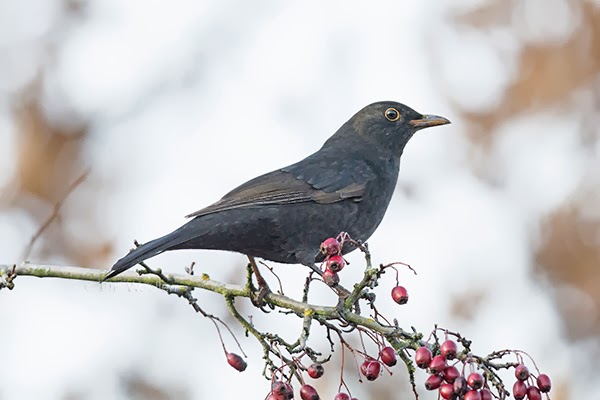With large movements of Pine Grosbeaks being reported throughout northern Europe in the autumn of 2012 we were disappointed none made it to the UK. But, unbeknown to everyone, one did although it wasn’t ‘discovered’ until early 2013.
The next new bird was, predictably, back ‘up north’ –
somewhere. I was returning to after visiting my parents in Somerset. A text from
Stu Taylor saying he was watching a male Harlequin Duck had me initially
texting him and asking if he was in Iceland. At this time the news hadn’t
broken that it was actually on N Uist. I pulled over into the services and made
a few calls and a plan was made to drive up to Uig and get the ferry across.
Stu arranged the accommodation and met us at the site and led us in convoy to
where the original finder was sat looking at the Harlequin. With a supporting
cast of Ring-necked Duck, 2 Snow Geese, small race Canada goose and
White-tailed Eagle it was a great two day trip.
Next up was the discovery of a Rock Thrush at Spurn. The news broke early one weekday morning & luckily I was in a position to leave almost immediately.
I was playing golf with my wife when news of the Bridled
Tern on the Farnes broke and so was completely oblivious to the myriad
of missed calls until I got back in the car! Luckily for me Frank Duff knew I’d
want to see this bird and arranged for my name to be on the list for the first
charter boat leaving Seahouses the following morning. Top man.
Jase Atkinson & I spent a few days ringing (or trying)
at Marazion Mars has part of a project looking at Aquatic Warblers during
August. Unfortunately heavy rain put paid too much ringing but we did end up
seawatching off Porthgwarra. A few people were there in the morning and it was
fairly successful with Cory’s & Balearic Shearwaters being seen amongst the
hundreds of Manx Shearwaters streaming past. A lunchtime meeting meant we had
to return to Marazion to meet up with the ringer in charge of the project but
we decided to go back to Porthgwarra in the afternoon. It’s just as well we
did. Just before we packed up I picked up a Fea’s Petrel flying in
from the east past the Runnelstone before heading off out towards the Scilly’s!
Little did I think I’d be back in Cornwall for another lifer later in the
year……….
I had a feeling I’d be back on Shetland & I wasn’t
wrong. Mike Pennington found a Cape May Warbler and this proved to
be the first twitchable UK record. Work commitments mean I don’t have the
luxury of spending 3-4 days travelling there and back so an offer of a place on
charter flight late the same night (cheers Danny boy) was well received and
meant we were back the same day having only missed 1 day off work.
Finally a Hermit
Thrush was discovered at Porthgwarra coincided with me having to go to
Cornwall on business. What a result!
So that's it. Tomorrow will be another year. Many thanks to all my mates who have made so many trips so enjoyable this year and to the lads and lasses from Hilbre Bird Obs and SCAN ringing group.
Next up was the discovery of a Rock Thrush at Spurn. The news broke early one weekday morning & luckily I was in a position to leave almost immediately.
No sooner had we returned from Shetland then a Semi-palmated Plover was found at South
Hayling Island near Southampton. It settled into a bit of a pattern and with
both Fred, Malc & me all having unavoidable work commitments for a few days
we couldn’t go until the weekend. A tense couple of hours at its usual spot
ensued as it didn’t show. Not surprising really with the numpties actually on
the spit it had been roosting on. Luckily it had been relocated the previous
day at another spot after leaving the roost and we decided to head the couple
of miles back into town and check it out…..just is the bird flew in!
So that's it. Tomorrow will be another year. Many thanks to all my mates who have made so many trips so enjoyable this year and to the lads and lasses from Hilbre Bird Obs and SCAN ringing group.


















































































































